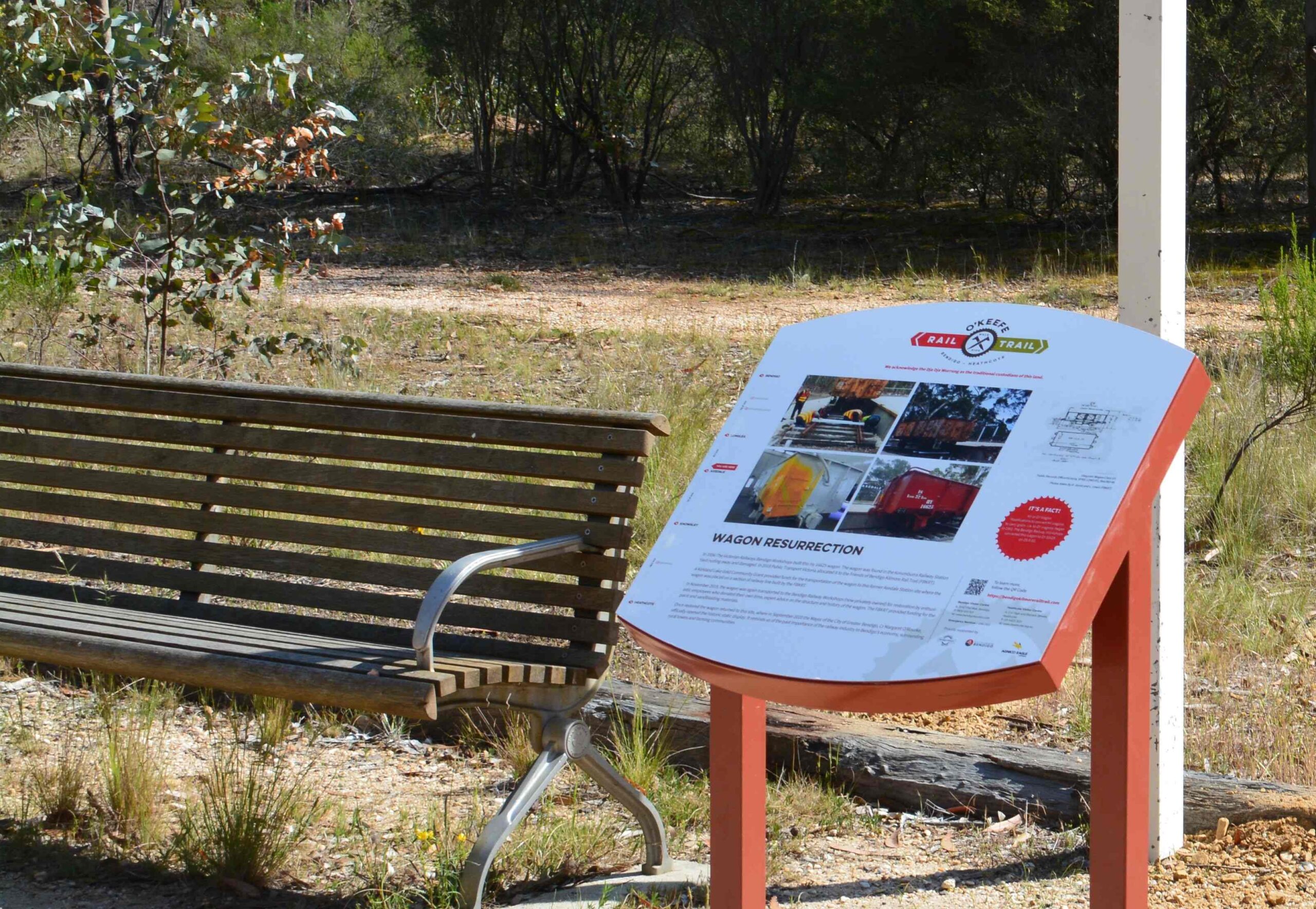While the contractors build the path, our very own historical recreation wizard, Ken Hanson, is busy repairing a wooden culvert that had partly collapsed. The structure is opposite Bald Hill and its previous mine workings, and adjacent to Flea Street. Originally, wooden culverts were not uncommon along the railway line because there was plenty of timber. Later replacements were mostly cement pipes in their place. For an organic material this example has survived remarkably well in spite of years of neglect and the prognosis is good for its rehabilitation.

Repair and revive: this example of a wooden drainage culvert is under repair. Along with the reproduction mile posts it will showcase railway infrastructure of the late 19th century.

Industrial heritage: the Bald Hill mine operated close by the railway and will be visible from the new path through Heathcote.
Quick history of the Bald Hill mine
If you’re interested in the gritty details of the Heathcote region’s mining heritage, a survey conducted by local archaeologist, David Bannear, in the early 1990s gives the following on the Bald Hill mine.
Description of physical remains:
Site worked intermittently between 1860 and 1910s. Single concrete footing probably relates to the attempt in 1910
to mine the hill for manganese and gold.
| December 1864 | Bald Hill Reef Co. crushed 112 tons of quartz. |
| February 1865 | Gold struck at Hard Hills, 15 ft deep. |
| 1873-1877 | Thomas Evans got a licence for a house at the Hard Hills, north-west of Heathcote, in March 1873 but did not renew it in December 1877 and his hotel was closed. |
| June 1884 | John Hedley applied for 20 acres at Heathcote for the Resurrection Gold Mining Co. Four men are to be employed for the first six months. In the Resurrection claim, Hard Hills, 56 tons crushed for 20 oz 16 dwt. |
| September 1884 | A crushing of 25 tons from Mr J. Hedley’s Reef, “The Resurrection” (near the Bald Hills, Heathcote) also turned out very satisfactorily, the yield being 17-1/2 dwt to the ton. |
| July 1910 | Bald Hill. Syndicate formed recently, to tunnel Bald Hill for manganese and gold. Members are Messrs Reid Clelland of Costerfield and Farnback and Colvin of Melbourne. The tunnel is on the west side of the hill and is now in a little over 100 ft. Analysis of manganese ore indicates traces of gold, |
Discover more from Friends of the Bendigo-Kilmore Rail Trail
Subscribe to get the latest posts sent to your email.

